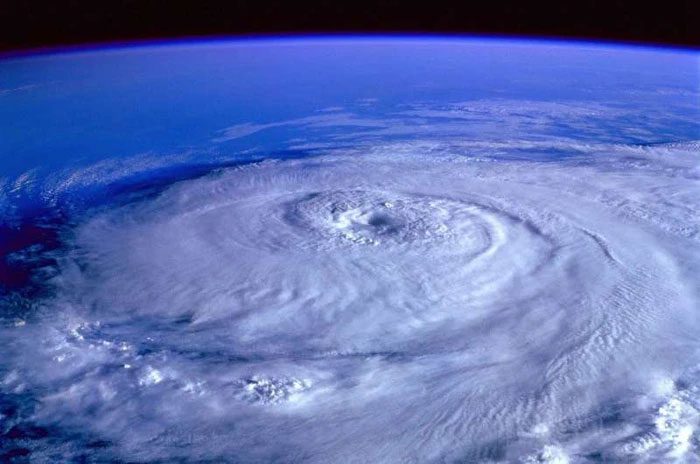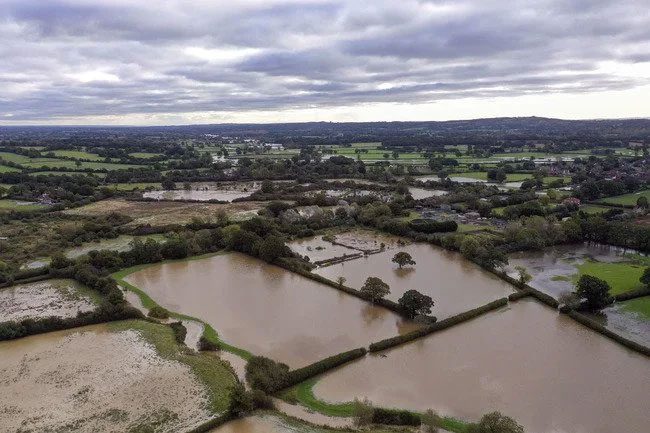Over 50 Years Without a “Direct Hit” from a Hurricane
According to Business Insider, in the past, to avoid hurricanes, you just needed to… move to Europe. As of 2020, the continent had not experienced a hurricane making landfall for over 50 years.
Of course, this does not mean that Europe is completely unaffected by hurricanes. The hurricane season still brings significant winds and rainfall. However, Europe has something that North America and many other places lack: a geographical position that helps protect the continent from hurricanes.
Hurricanes typically form off the coast of West Africa, where warm waters near the equator and high humidity create spinning columns of air—an ideal component for hurricane formation. The more warm, moist air present, the more powerful the hurricane becomes. This is why a small tropical storm can quickly develop into a mature hurricane as it moves across the Atlantic Ocean.

In the past, a hurricane had to struggle significantly to make landfall in Europe. (Illustrative image: phys.org).
Notably, hurricanes are often pushed westward by trade winds, due to the Earth’s rotation. This is why Europe, as well as the West Coast of the United States, rarely experiences direct hits from hurricanes. However, this is not the only reason explaining why hurricanes almost never strike Europe.
Since 2000, the remnants of 30 hurricanes have reached Europe. However, by the time they “made landfall” on the European continent, they had transformed from major hurricanes into smaller, weakened storms. This is thanks to the continent’s unique geographical position.
For a hurricane to reach Europe, it must travel very far north, about 200 miles (over 320 km). Upon reaching 30 degrees north, the storm encounters the subtropical jet stream moving in the opposite direction to the trade winds. At this point, the storm is pushed eastward.
As it moves further north, the water beneath it becomes colder, averaging around 5-10 degrees Celsius, which means the hurricane no longer receives much energy. As a result, it begins to weaken as it approaches Europe.
Most remnants of hurricanes will combine with other weather conditions, resulting in strong winds and rain, but the areas primarily affected are mainly Ireland and the United Kingdom.
However, that was the story a few years ago. As global surface temperatures rise, sea surface temperatures in the North Atlantic are also increasing.
Researchers estimate that this could contribute to an increase in the number of strong hurricanes reaching Europe. Some experts predict that by the end of the 21st century, Europe could experience an average of 13 strong hurricanes each year during the hurricane season.
What kind of hurricane could “make landfall” in Europe?
In October 2021, according to phys.org, Hurricane Aurore swept through areas in Northern Europe, resulting in at least 4 fatalities in Poland and causing significant damage in Germany, France, the Netherlands, and several other regions.
In France, about 40,000 homes lost power. 4,000 technicians were deployed to restore electricity to households.
Hurricane Aurore moved through eastern France overnight, bringing winds of up to 175 km/h, triggering an orange weather alert system (the second-highest warning level) in many regions of France.

Hurricane Aurore moved from France to England, causing flooding near Lingfield in Surrey. (Image: AP).
Meanwhile, in September 2022, Discover magazine reported that Hurricane Fiona had “torn through” Puerto Rico and made landfall in Nova Scotia, Canada. This was one of the strongest hurricanes ever recorded in Europe.
Until that time, scientists could only explain why some hurricanes could cross the Atlantic to make landfall in Europe, while others could not.
According to a study published in the journal of the American Meteorological Society, analysis of data from 180 hurricanes over 40 years showed that stronger hurricanes re-energized by jet streams have double the likelihood of reaching Europe compared to other storms.
When these hurricanes strike Europe, they can cause extreme winds and heavy rainfall. Scientists believe that warm waters due to climate change also contribute to this phenomenon.




















































